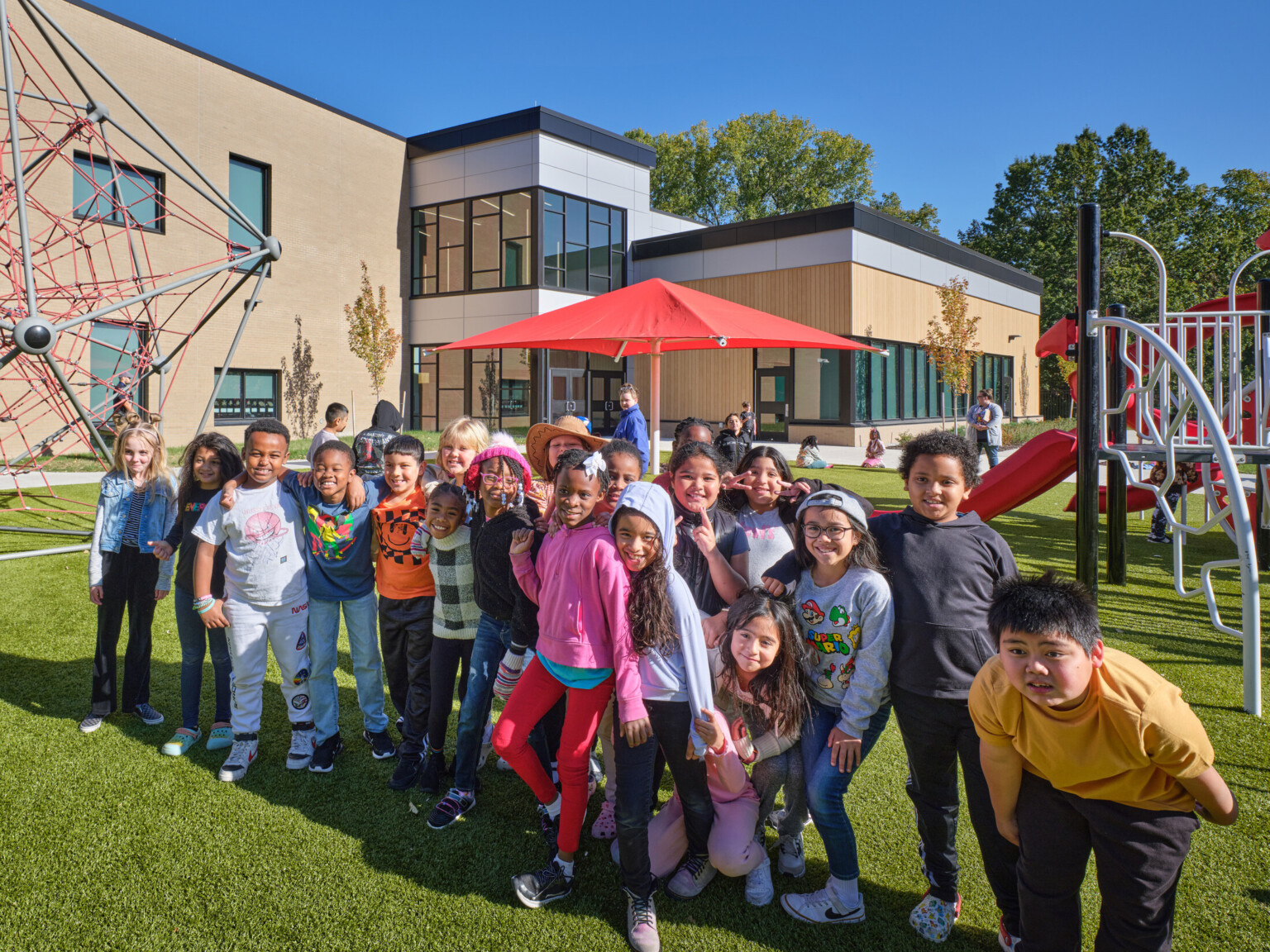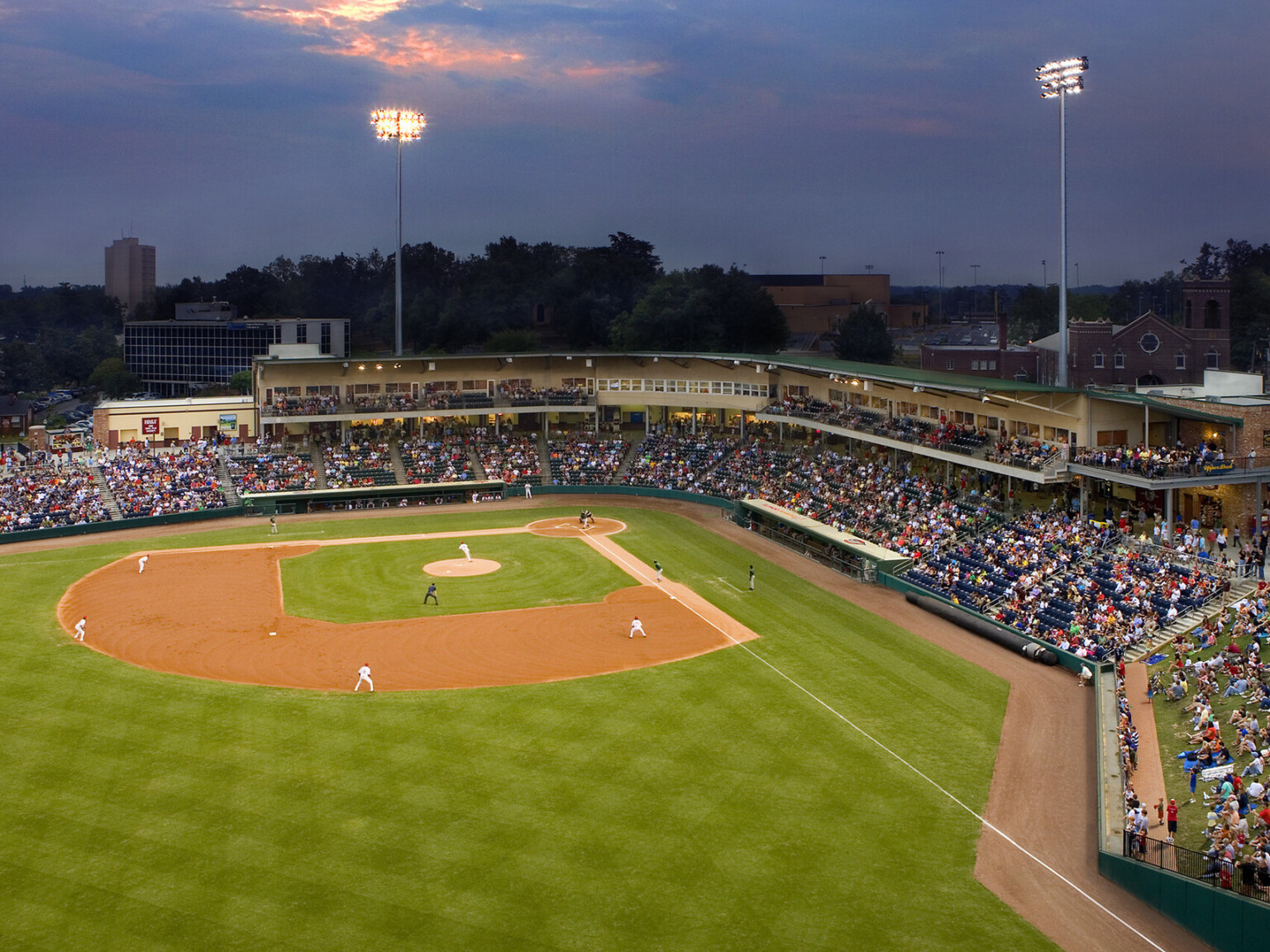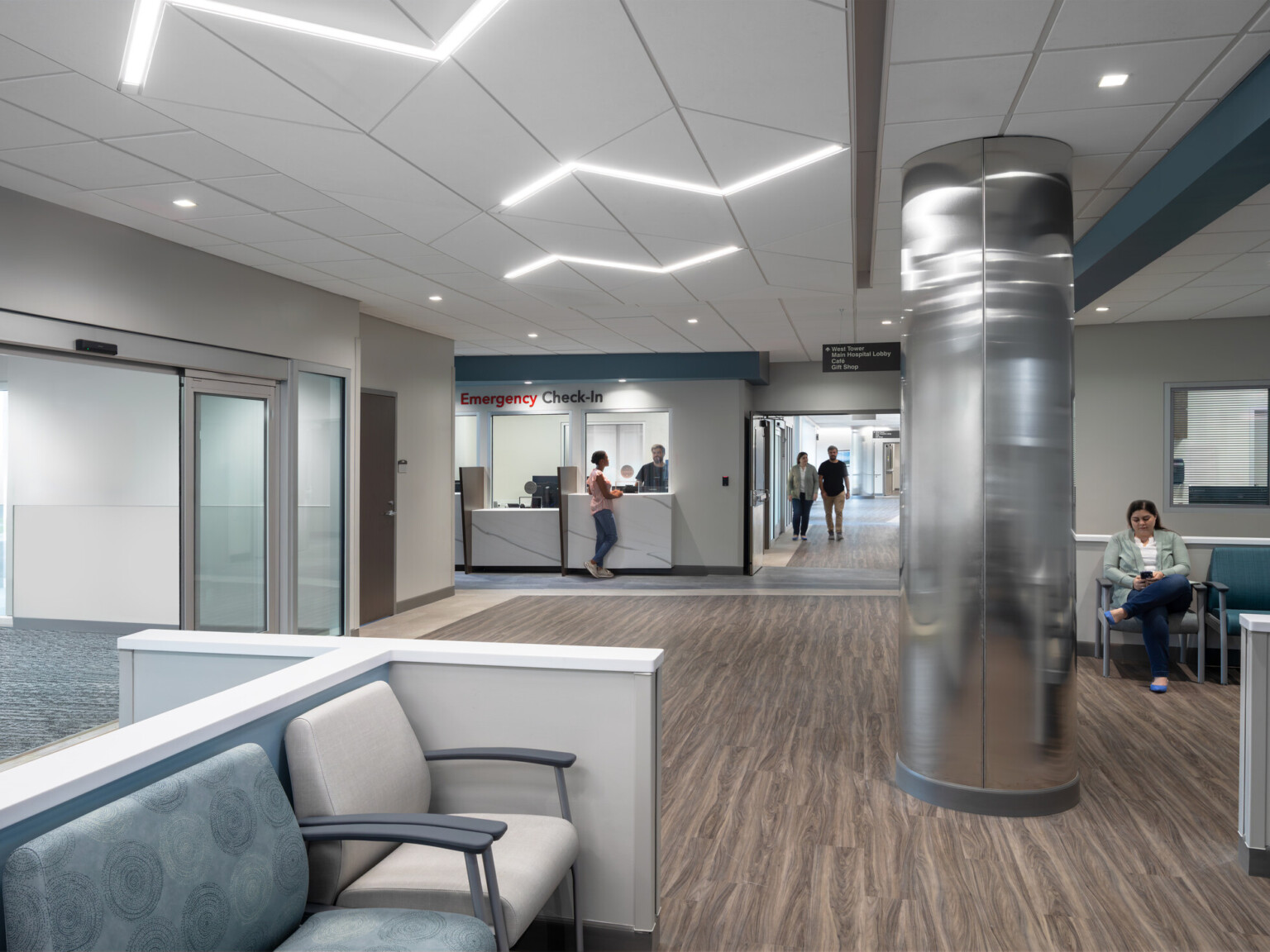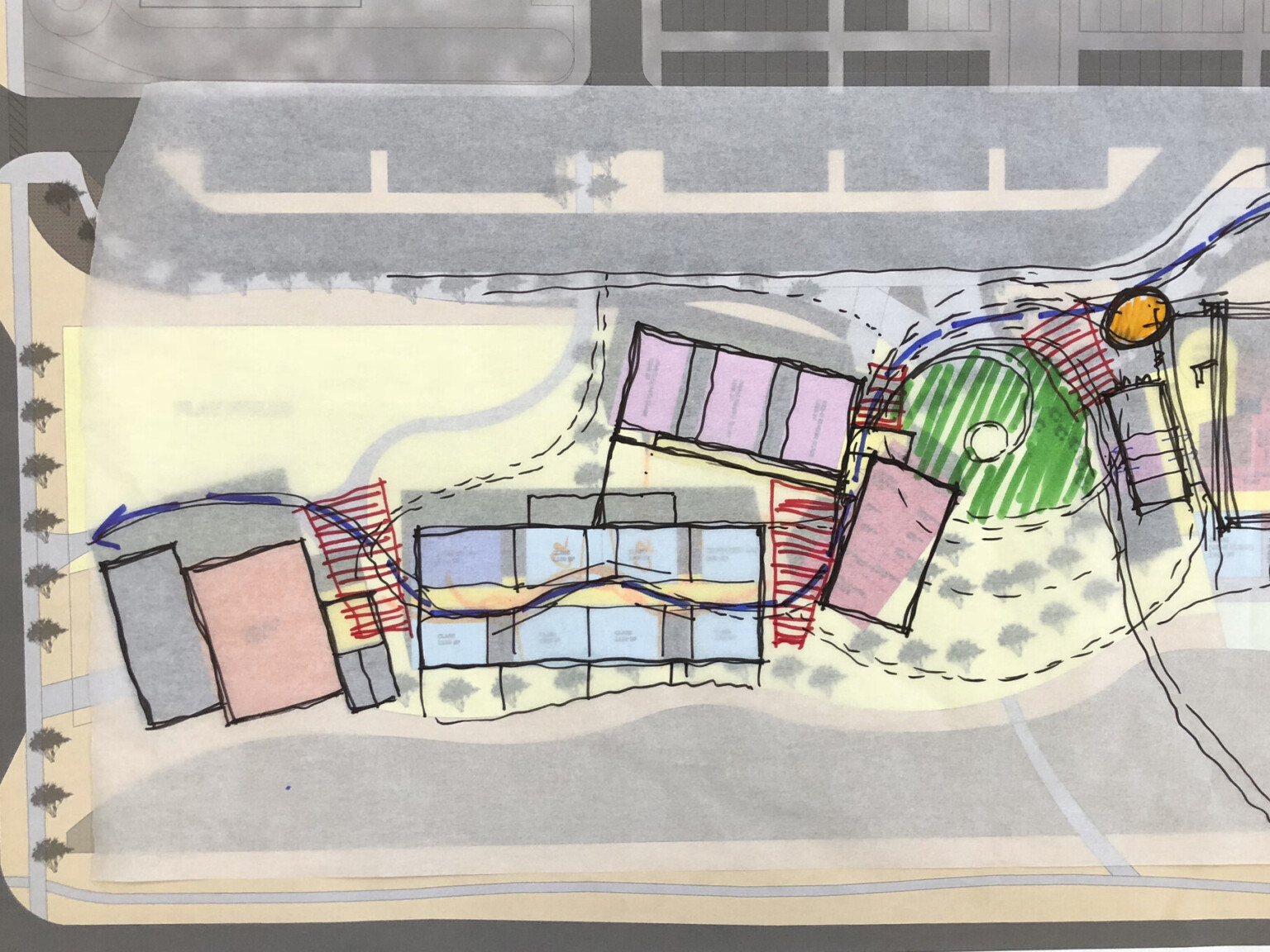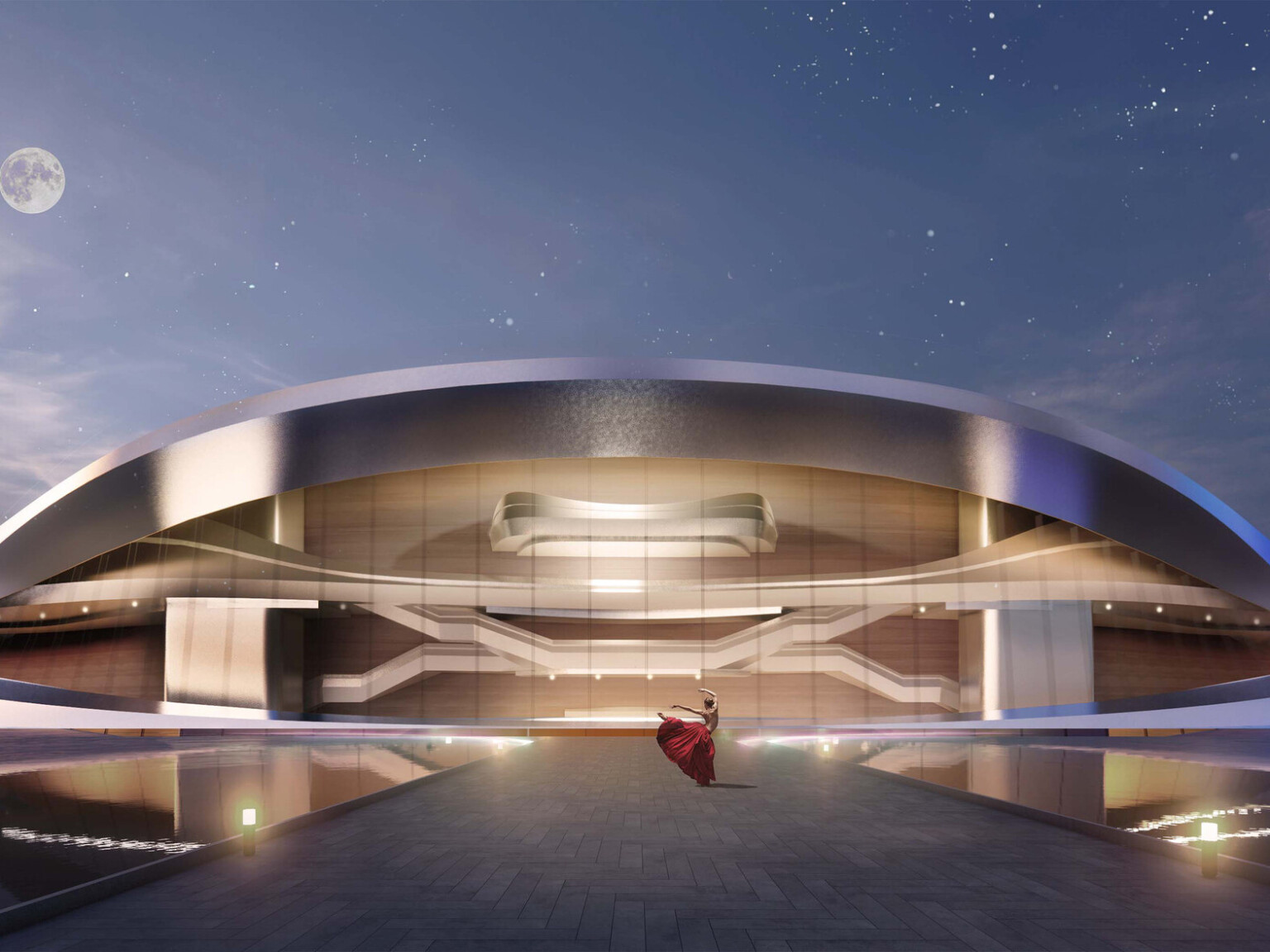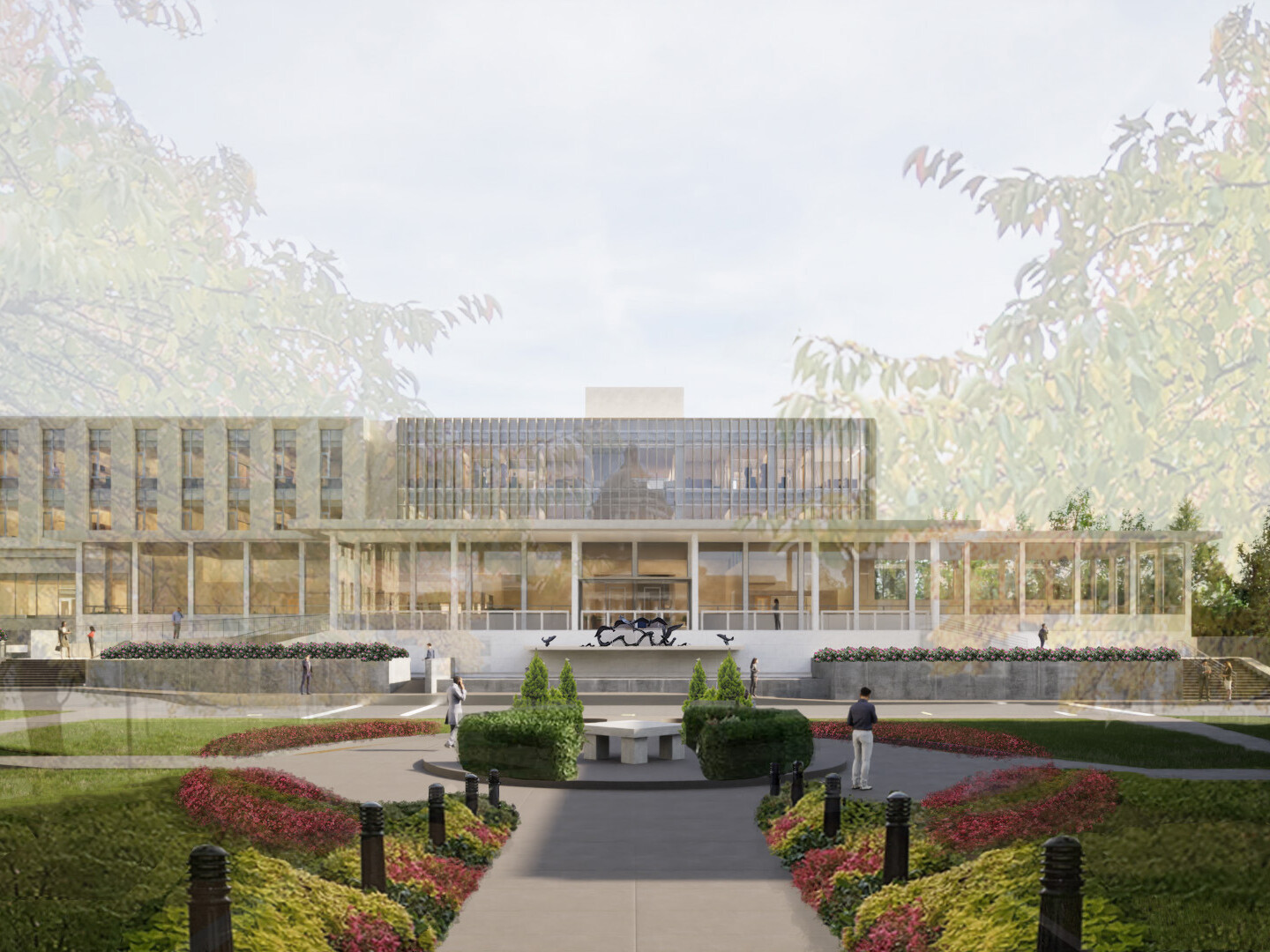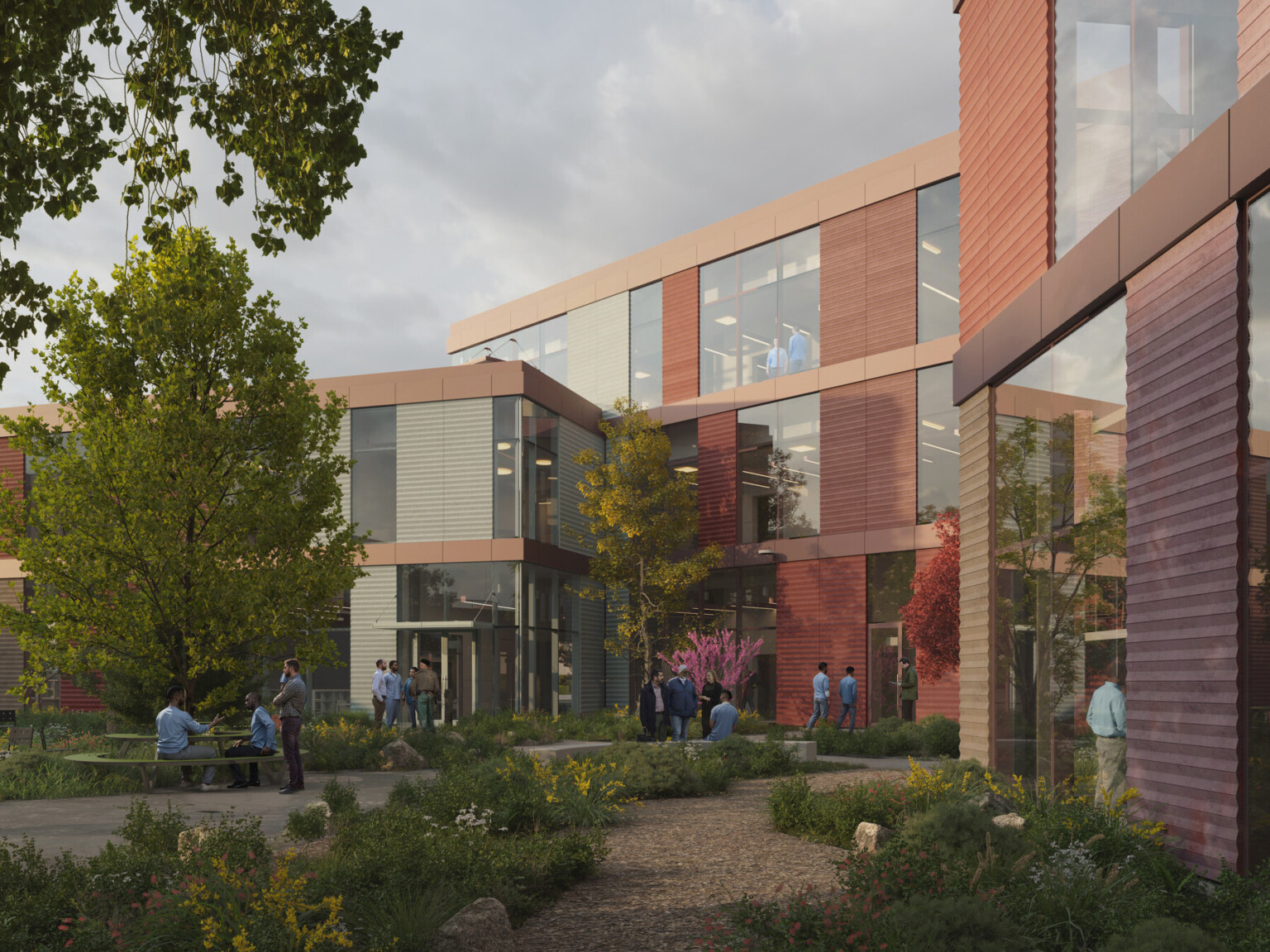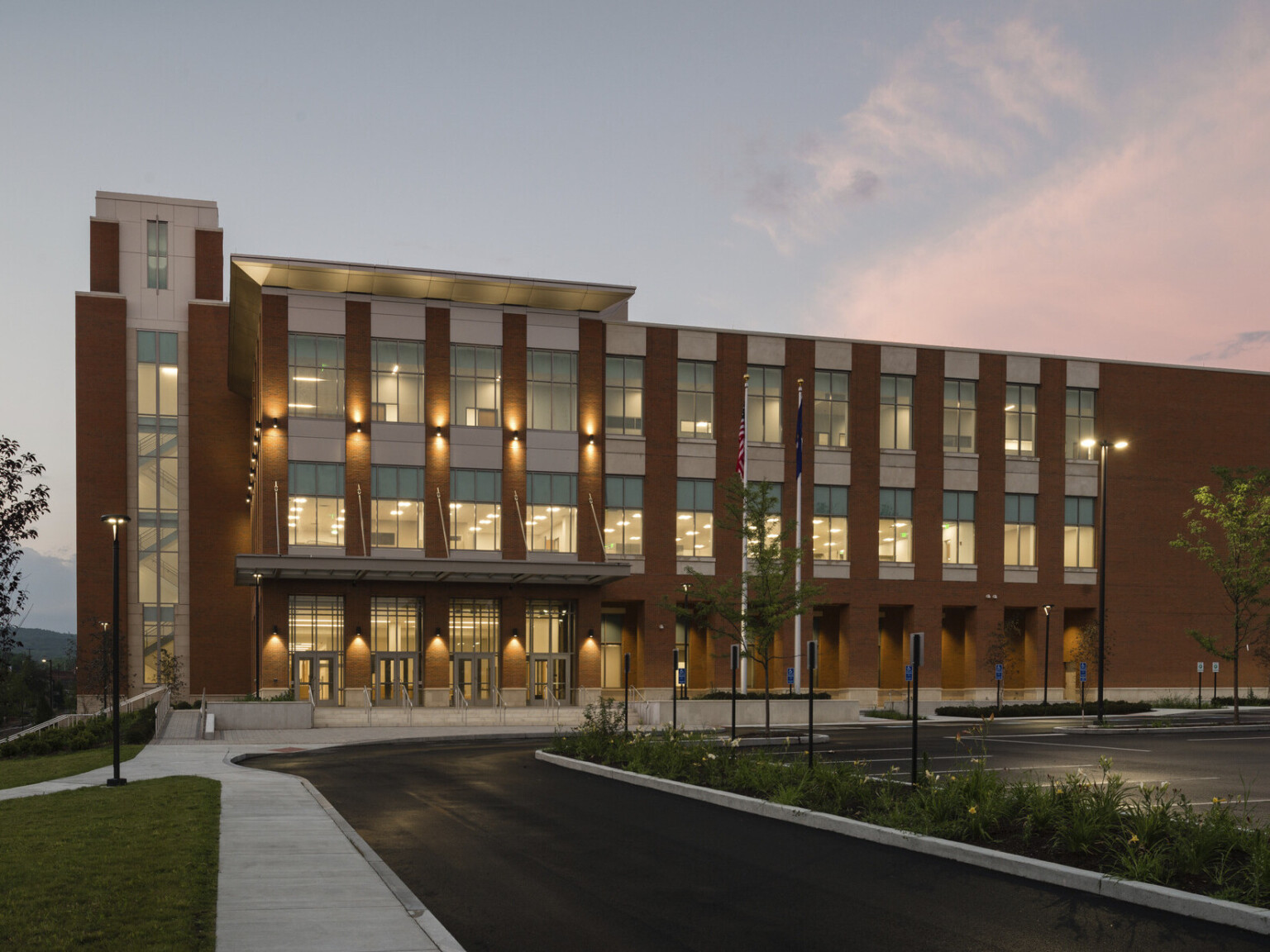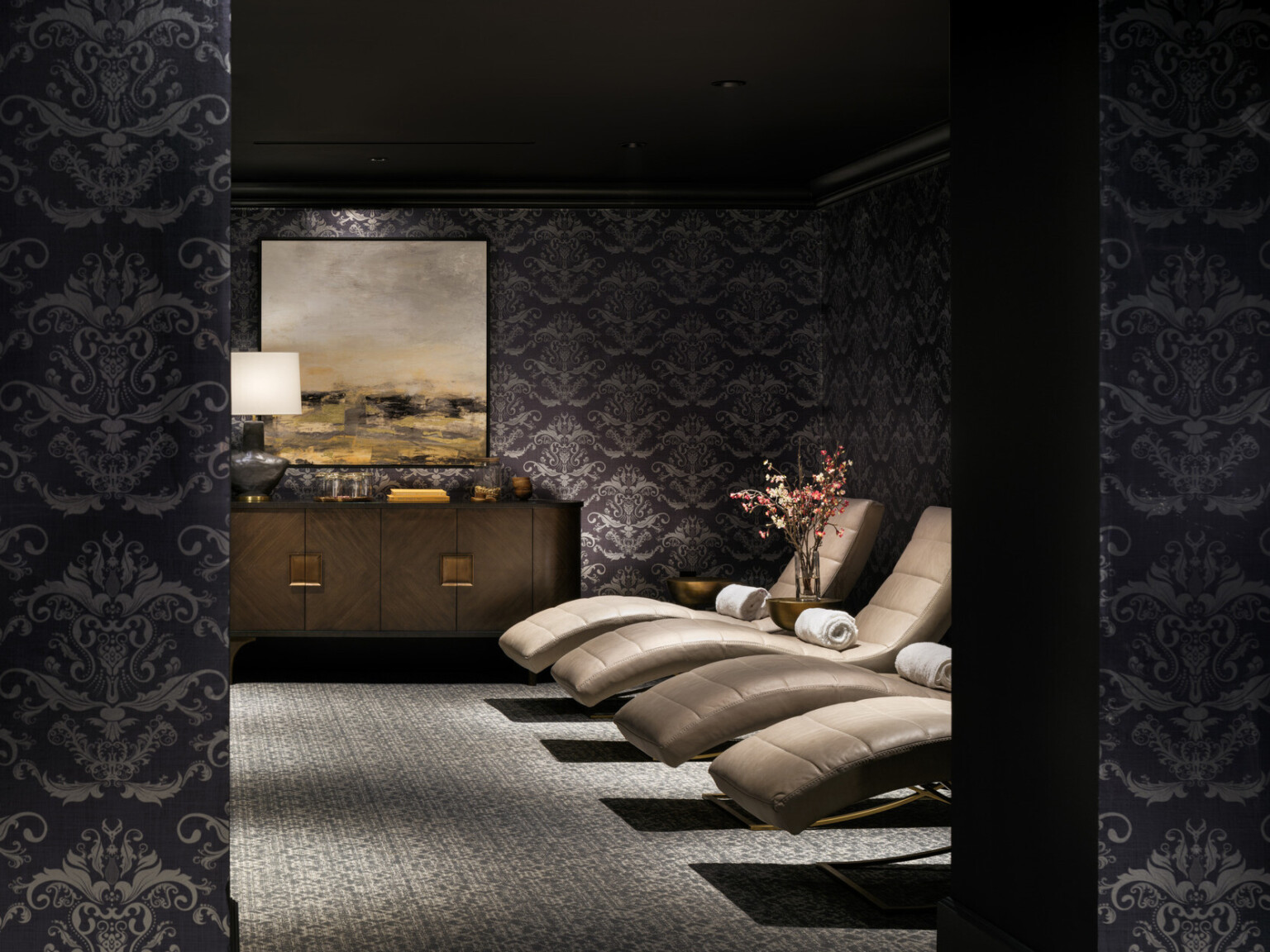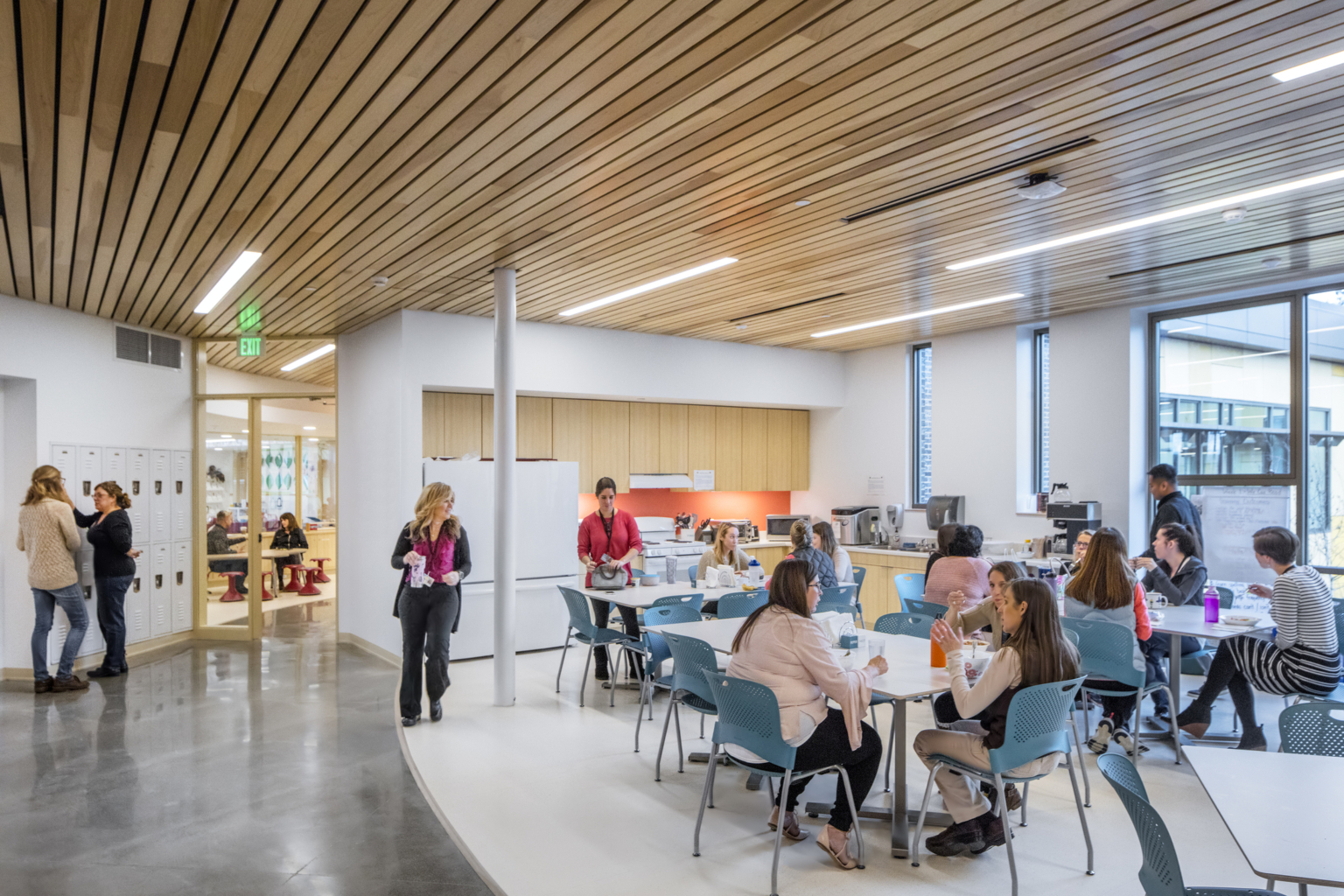
5 Design Elements that Support Teacher Well-being
A strong foundation manifests in environments where educators can effectively manage the demands of their roles and where they feel a deep sense of community and belonging. This foundation enhances teacher retention and overall job satisfaction and renews teachers’ commitment to their work.
Looking toward the future, addressing the overall health of staff is not just a reaction to current challenges, but a sound investment in the vitality, resilience, and long-term sustainability of our schools. A supportive environment has a direct impact on the well-being of adults and, by extension, on student success. Thriving teachers are the cornerstone of thriving classrooms. As a former administrator, I’ve seen firsthand when educators flourish, so do their students. The resulting ripple effect strengthens communities and ensures a brighter future for all.
Our innovative and research-based designs cater to the needs of educators, ensuring that schools of the future are places of learning and havens of support and inspiration for teachers.
Adaptive/Flexible Workspaces
We design flexible environments that evolve with the changing needs of teachers and students. These adaptive workplace settings allow teachers to customize their workspace to suit their personal needs and teaching styles.
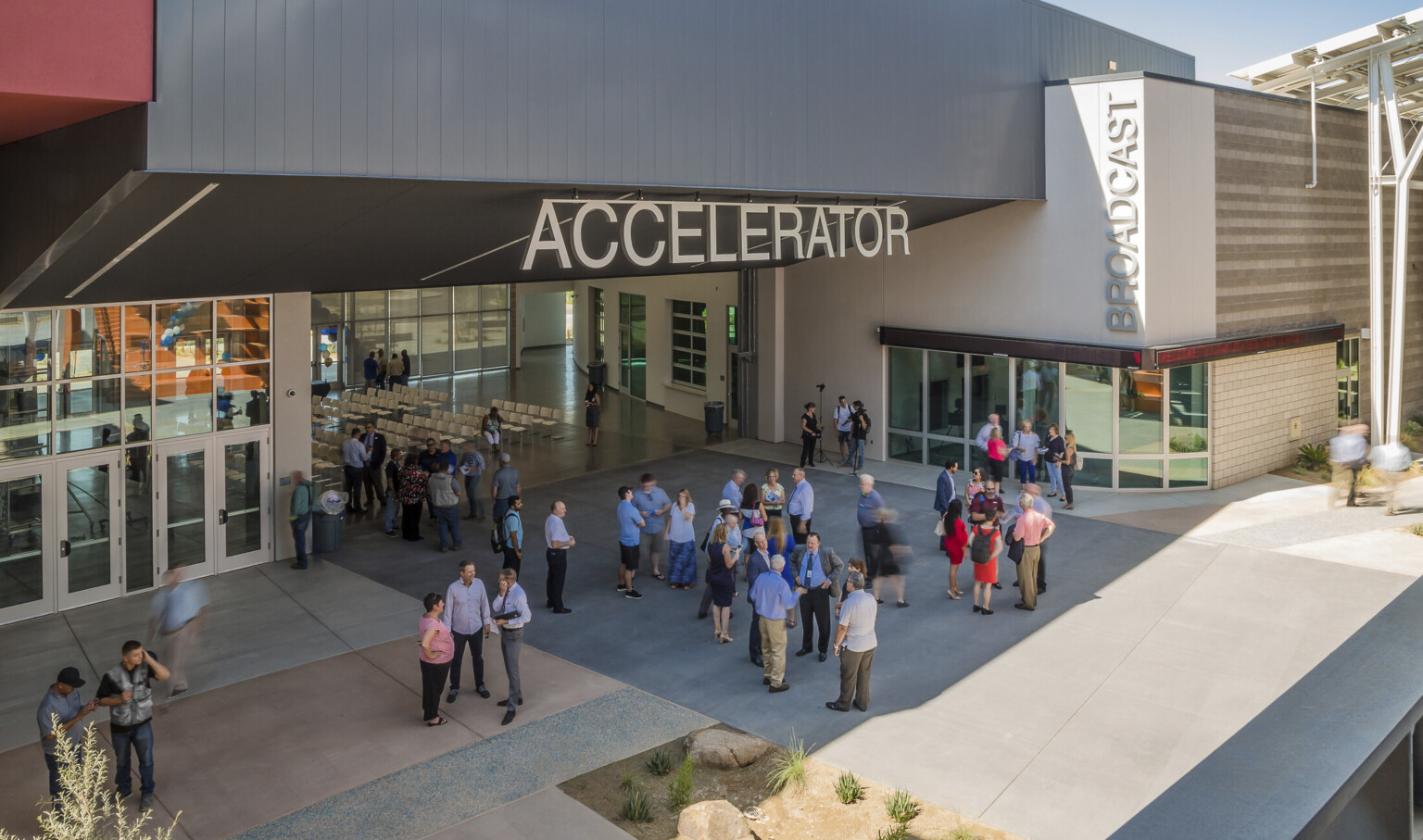
Providing teachers with a space that is diverse and allows them to cater to different students’ needs creates a positive working environment. We also equip teachers with the knowledge, confidence, and collective efficacy to explore and leverage their space through BOLDTM.
Holistic Wellness Space
With teacher well-being and dignity as an integral priority, there must be a focus on integrating mental and physical health resources within a school. We achieve this through spaces for relaxation, self-care, mindfulness, and rejuvenation.
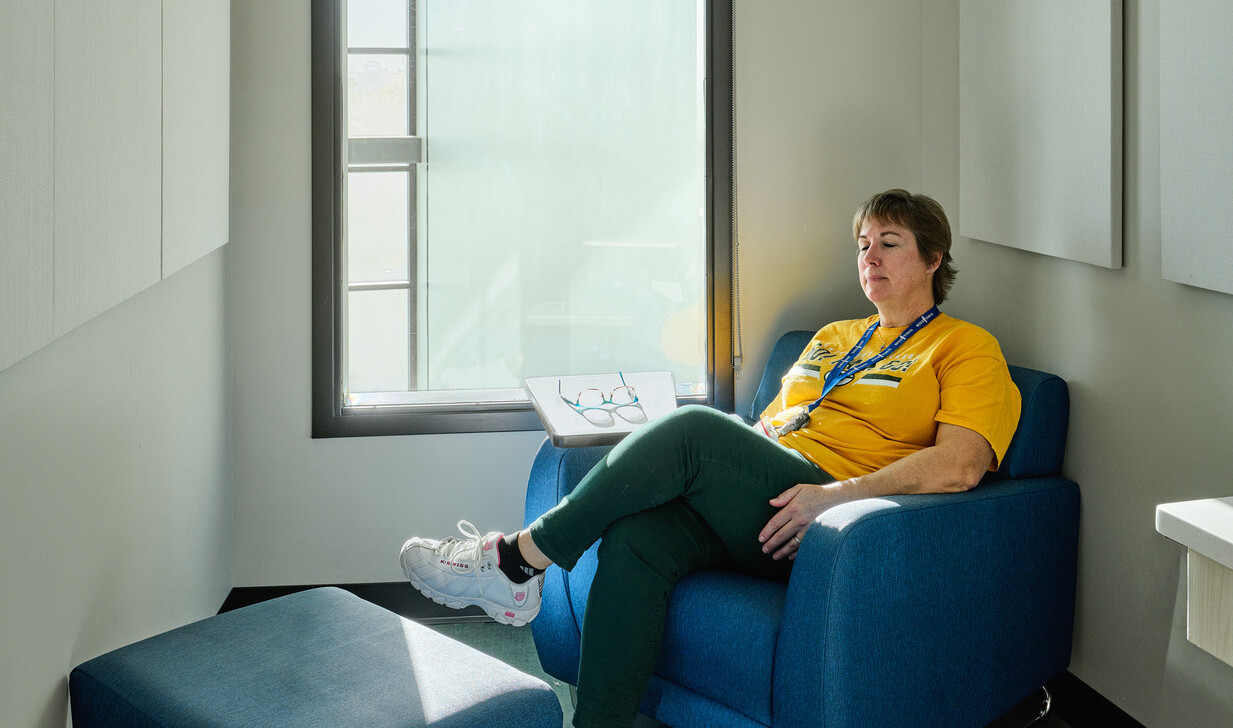
Trauma-informed design principles guided our design for Boys Town Education Center. We recognize the Boys Town staff experience secondhand trauma through their students. Our solution features teacher respite rooms that provide teachers with privacy and dignity as needed.
Intentional and Efficient Layouts
Our designs leverage strategic learning space adjacencies that promote and maximize intentional movement and instructional time. Put simply — teachers want more time to teach. The more time we can provide teachers to work with students in the classroom, the greater the learning outcomes are for students.
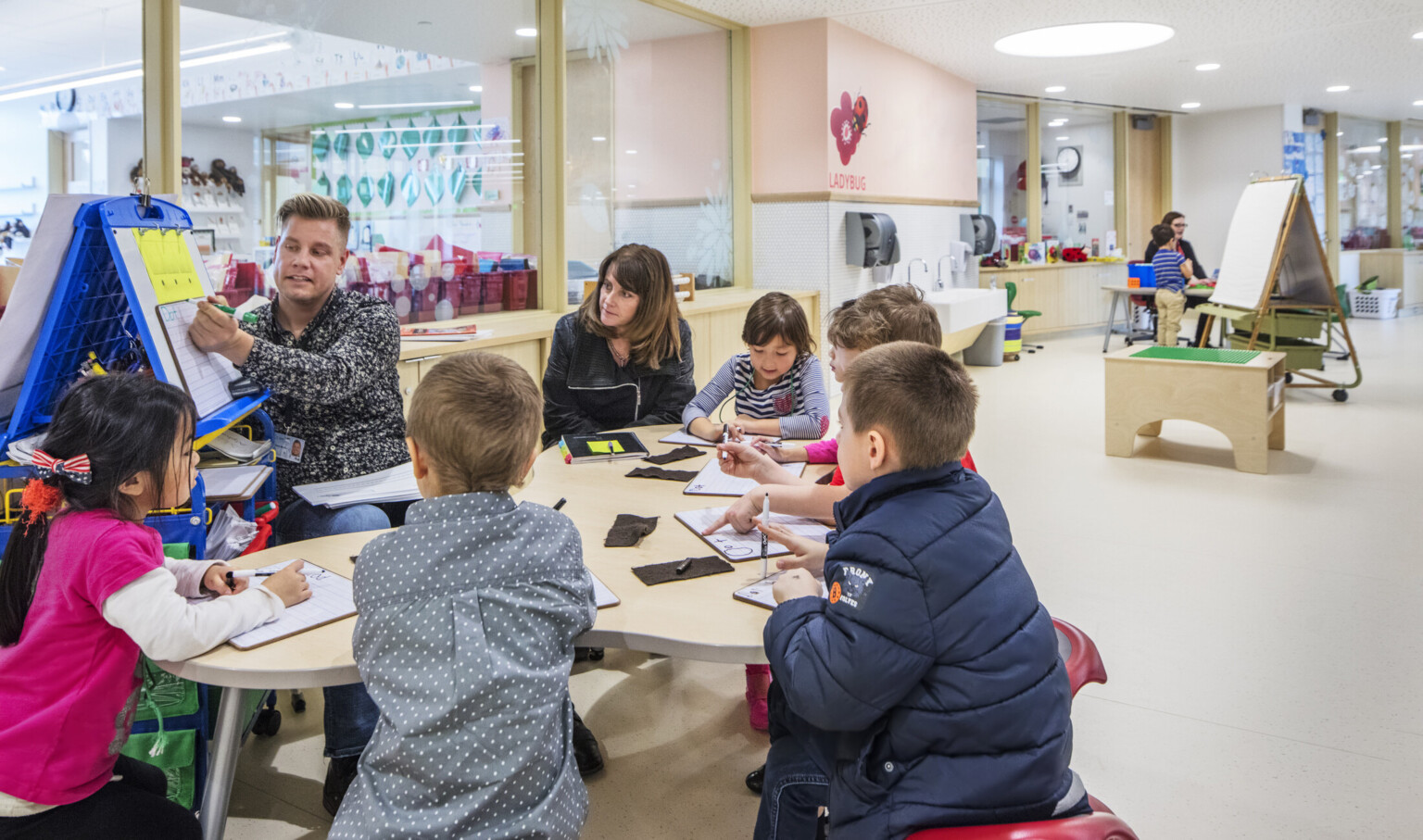
When compared to traditional early education learning environments, Pathfinder Kindergarten Center reduces transition times by 60%. Over the course of the year, that gives students an additional week of learning time.
Nature-Integrated Spaces
Bringing the outdoors inside through biophilic design elements, enhancing mental clarity and reducing stress, and ensuring access to natural light and fresh air to promote physical well-being are all elements we use in school design.
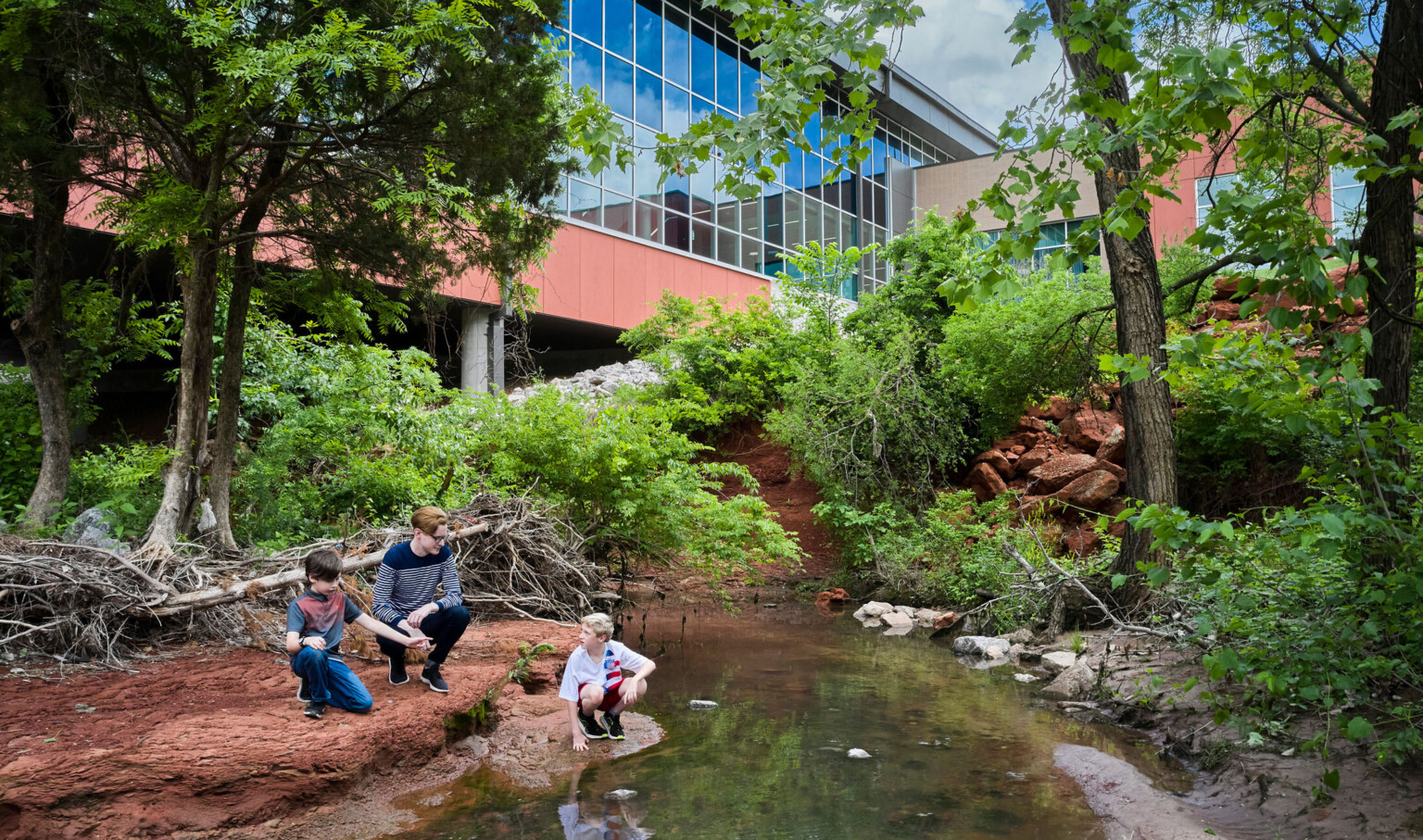
Just like students, teachers benefit from the positive attributes of outdoor education, as well as biophilic themes inside the building. Besides the physiological benefits, the ability to infuse outdoor elements into the curriculum is beneficial. At James L. Capps Middle School, an existing park and a creek that bisects the school creates an outdoor classroom that offers unique teacher and learning opportunities.
Community Hubs/Collaboration Spaces
Creating spaces that foster collaboration, teamwork, and support among educators cultivates a strong sense of belonging and shared purpose. Connecting with students is paramount for educators, but the interpersonal connections they share with their counterparts are just as important. This allows them to share ideas, lend a helping hand in a pinch during the day, and create an environment that promotes the safety and well-being of everyone involved.
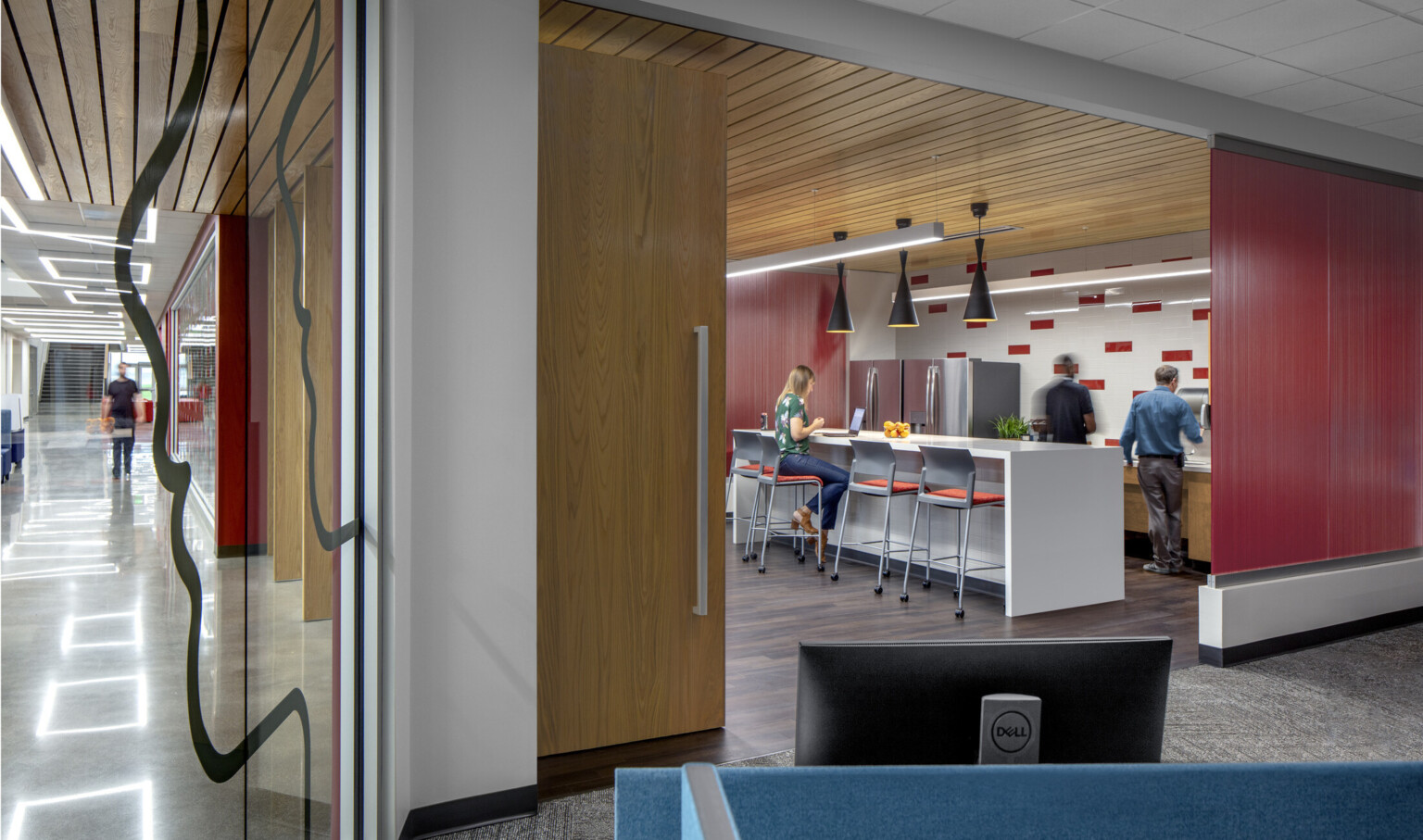
Transparency and connectivity are examples of how we promote teacher collaboration in design. Shared spaces and collaborative areas allow for teachers to come together and connect, while still being able to facilitate and observe their students.
It’s important to remember that a school is as much of a workplace as an educational facility. We ask teachers to perform at the highest level and be professionals in these spaces. Our design must reflect this.
Let’s start the conversation on how your community can design a future-ready workplace for your teachers.

